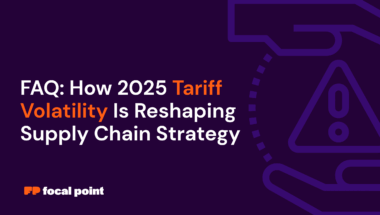Organizations that want to ensure they are meeting their DE&I goals and guarantee that their supply chains are inclusive and representative of the communities they serve should not overlook the importance of supplier diversity as a catalyst for change. According to a 2019 McKinsey study, companies in the top quartile for ethnic and cultural diversity outperformed those in the fourth by 36% in profitability, slightly up from 33% in 2017 and 35% in 2014.
However, relying on past reporting to give a single rear-view snapshot of supplier diversity is not enough to change the future. The solution is to track supplier diversity throughout the procurement process, monitoring it at every stage to secure better outcomes for both the company and the community.
Why Supplier Diversity?
The significance of supplier diversity in procurement is two-fold. First, it ensures that companies are doing business with a wide range of suppliers, which in turn helps to create a more inclusive and equitable business environment and mitigates the risk of disruption by preventing overinvestment in a single supplier. Additionally, supplier diversity can lead to increased innovation, as companies are exposed to new perspectives and ideas from a diverse group of suppliers. Together, both create a supply chain landscape that is representative of the organization’s customer base.
But true supplier diversity is difficult to achieve and requires a watchful eye over the entire procurement process. CPOs should utilize a procurement workflow that enables diversity tracking from request through approval. As CPOs track against their goals, a procurement workflow gives tangible insight into the total spend from diverse suppliers and lays out why suppliers are being disqualified along the way enables better decision-making immediately. By incorporating diverse suppliers into the process, companies can ensure that they are doing business with a wide range of suppliers throughout the project, rather than just at the end.
Tracking Across the Procurement Process
The benefits of tracking diverse supplier inclusion throughout the procurement process are numerous. It allows companies to see how they are progressing against their supplier diversity goals as they go, rather than acting retroactively. Additionally, it allows companies to identify and address any issues that may be preventing them from working with diverse suppliers. For example, if a company sees that they are disqualifying a high number of diverse suppliers at the RFP phase, it can look deeper into why and take steps to address the issue.
Furthermore, a simplified supplier diversity workflow can help CPOs quantify their efforts toward the organization’s larger DE&I goals. Reacting proactively to integrate a greater number of diverse suppliers and adjust mid-course saves time and pushes the organization to have regular reviews of its diversity goals.
Supplier Diversity Benefits the Whole Organization
The impact of incorporating diverse suppliers into the procurement process can be significant. By working with suppliers from underrepresented communities, companies can help to promote economic development in these areas and improve relationships with these localities. Additionally, supplier diversity can lead to increased innovation, as companies are exposed to new perspectives and ideas from a diverse group of suppliers.
Supplier diversity in procurement must be addressed so that businesses of all sizes have supply chains that are inclusive and representative of the communities in which they operate. A tailored workflow that allows for tracking diverse supplier inclusion throughout the project process leads to better outcomes for both the company and the community. Years of research, like was conducted by McKinsey, support the benefits of supplier diversity for increased innovation, cost savings, and improved relationships with underrepresented communities. It is time for companies to take a step forward and make supplier diversity a priority in their procurement process.



